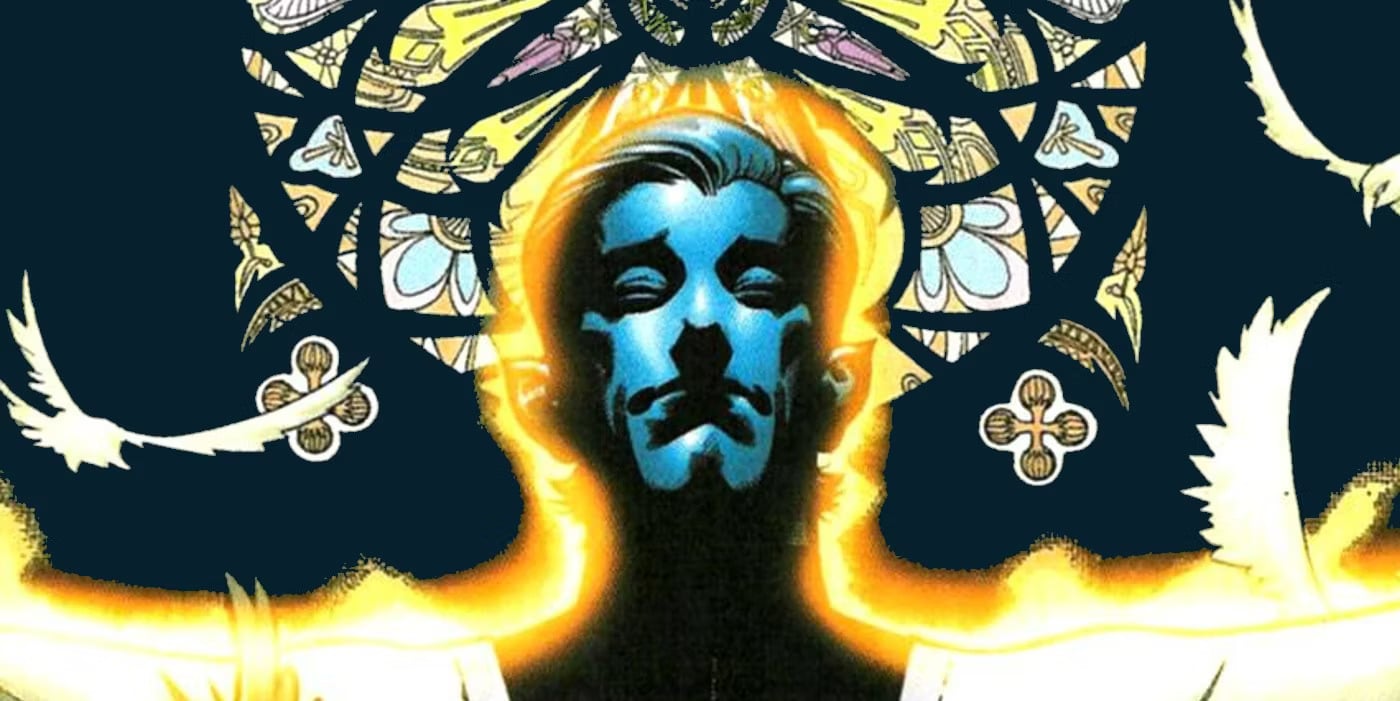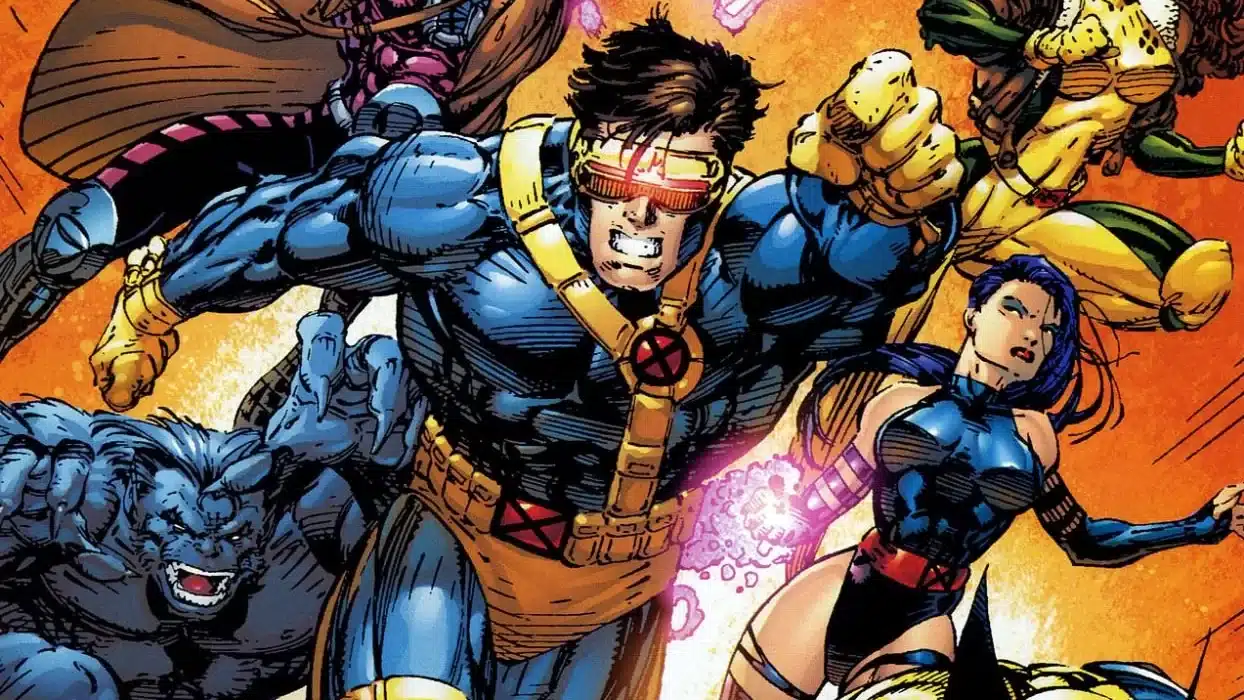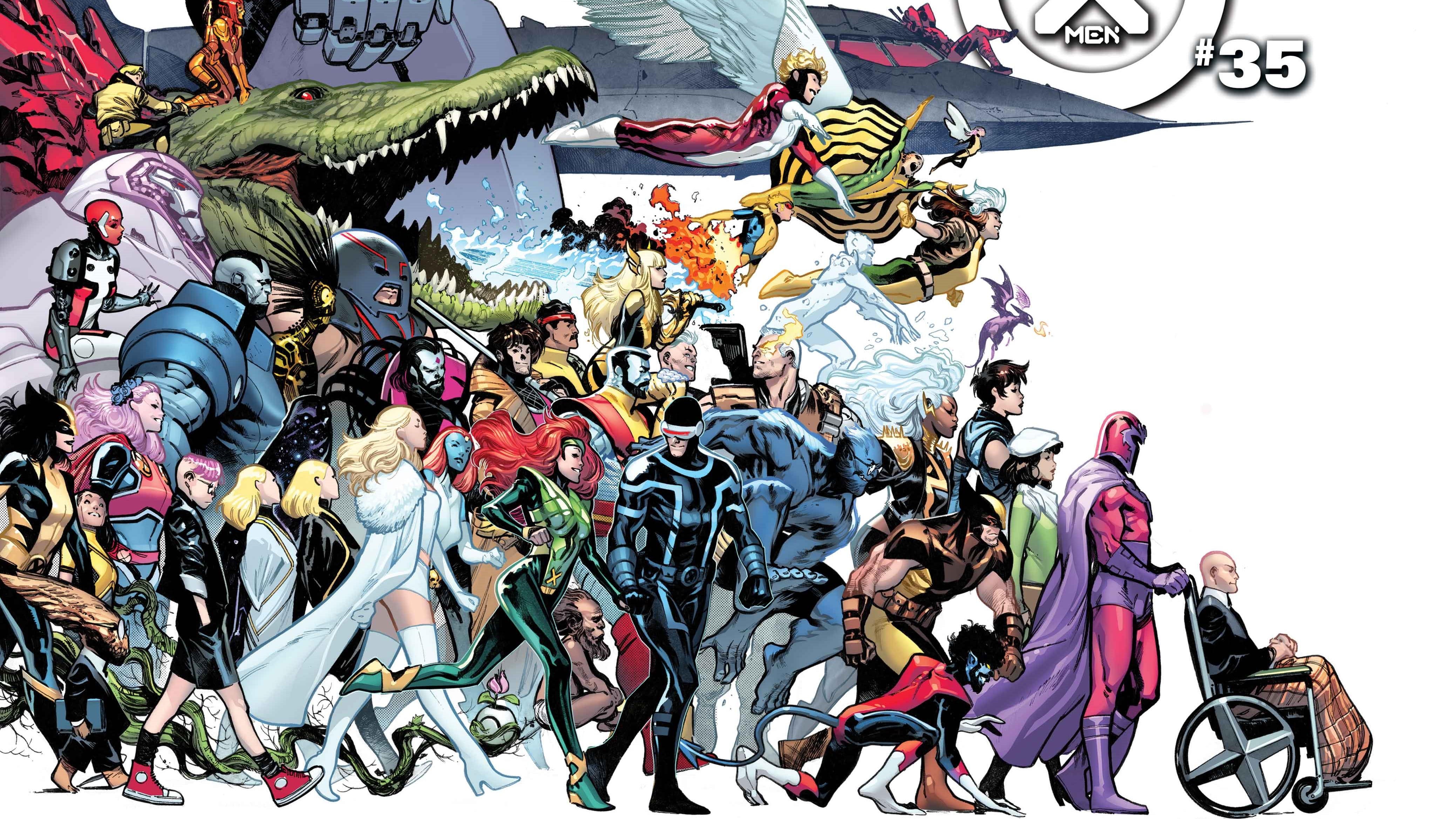People only familiar with Hawkeye from his appearances in the Marvel Cinematic Universe might be surprised to hear this, but Hawkeye is supposed to be a fun character. While the MCU Hawkeye is largely dour and grimacing — a family man capable of cracking the occasional wry joke, but someone who takes his job pretty seriously and tends to get lost when standing amongst his more colorful peers, more secret agent than superhero — the comic book Hawkeye is a former carnie-turned-villain-turned-hero-turned-mentor who wears purple costumes with loin cloths and stands next to gods and geniuses alike armed with a bow and a bag of trick arrows and when done right, is a tremendously fun character.
Much of this disconnect between the traditional comic book Hawkeye and his cinematic counterpart comes from the fact that MCU Hawkeye is most directly inspired, like much of the SHIELD-adjacent stuff in the early MCU, by writer Mark Millar’s Ultimates, a series designed to introduce a new version of Avengers for a early 21st century audience seemingly dedicated to the belief that comics should be as supremely realistic and un-fun as possible (or at least, only fun in a way that would appeal to cynical teen boys).
While the MCU has moved away from those tonal inspirations to some degree, Hawkeye specifically has had a harder time escaping it; a goofy haircut in Avengers Endgame aside, the biggest swerve the MCU Hawkeye has taken is the introduction of his family, but while that does a lot to humanize the character and make him more appealing, it’s wholly an invention of the films and doesn’t really imbue the character with his comic book counterpart’s sense of fun. But with his new Disney+ series trying to finally put a little of that fun back into the character, let’s take a look the character’s (non-Ultimate) comic book history for examples of just how entertaining the character can be, including the one source that seems to be the most direct inspiration for the new show.
Bring on the Bad Guy

Hawkeye, like at least a few fellow Avengers, started out as a bad guy, a love-sick stooge of the then-villainous Black Widow who principally fought Iron Man. But his heart was never really in being a bad guy (he was just smitten with Black Widow, thereby beginning a long history of unrequited attractions to his partners/teammates) and he eventually decided to become an Avenger instead of fighting them. He auditioned (at a time when the team wasn’t exactly holding auditions…) in one of the most bonkers ways possible, by breaking into the Avenger’s mansion headquarters and tying up their butler, Jarvis.
It’s a wild bit of Silver Age storytelling, but it worked! Soon, Hawkeye joined fellow reformed villains Quicksilver and Scarlet Witch alongside Captain America as part of “Cap’s Kooky Quartet”, representing the first of many notable Avengers roster changeovers as the foursome took over for the departing founders Iron Man, Thor, Giant-Man and Wasp. The combination of necessary Silver Age repetition and the fact that Stan Lee’s heart never quite seemed to be as much in his Avengers stories as in other series means that the schtick of Hawkeye in this era grows old, fast: he’s loud and brash, playing the “young upstart at odds with the team leader” role in questioning Captain America’s decisions and constantly picking fights with his teammates, all while relentlessly hitting on Scarlet Witch. But there’s no question he stood out as a loud and colorful character, and was anything but the drab, quiet SHIELD agent of the MCU.
Leader of Men

Though Hawkeye spent many years as something of the burr in the Avengers’ saddle, giving their leaders a hard time, quitting when he didn’t get his way, taking Hank Pym’s growth serum in order to give himself superpowers due to feelings of inadequacy (then eventually quitting the serum and taking up his bow-and-arrows again), over time he grew into the role of seasoned veteran. This eventually led to Hawkeye being tapped to lead a second branch of the Avengers on the West Coast (as part of Vision’s plot to take over the world, but that’s another article) and soon he was in California seeking out superheroes to fill out the ranks of the West Coast Avengers.
Leadership proved a fun fit for the character. The tension between the hothead blowhard he was and his new responsibilities as a leader created an entertaining friction as he channeled those earlier feelings of inadequacy into proving his “expansion” team was every bit as good as the original, such as his desperate efforts in early issues of West Coast Avengers to recruit the Fantastic Four’s Thing.
Hawkeye’s status as both a reformed villain and a leader of superheroes would inspire another fun turn for the character years later. In 1996, Marvel decided to farm out their core superhero books (Captain America, Iron Man, Avengers, and Fantastic Four) to former Marvel superstar artists-turned-Image founders Rob Liefeld and Jim Lee. While the resulting “Heroes Reborn” project only lasted a little over a year, the absence of those titles in the Marvel Universe left a hole that was filled, in part, by The Thunderbolts, a book starring a seemingly new team of superheroes with a twist: they were all really super-villains posing as heroes for nefarious purposes. But by the time “Heroes Reborn” ended and the OG Marvel characters returned, something funny happened: some of the Thunderbolts decided they liked being heroes more than villains.

It was the old “reformed villain joins the Avengers” plot beat writ large, and into this dynamic stepped Hawkeye. Not quite content to go back to being the resident hot-tempered loudmouth on the Avengers after the demise of the West Coast branch, Hawkeye took it upon himself to use his experience as a villain-turned-hero to help mentor the Thunderbolts and keep them on the straight-and-narrow. Less a team leader than the team’s moral compass, the resultant plots represent a fun use of Hawkeye’s history, as both a character with a somewhat shady past and as seasoned superhero. This is especially true in his burgeoning relationship with Moonstone, the Thunderbolt most likely to break bad once again, with Hawkeye functioning as a sort of reverse-Black Widow to Moonstone, using their mutual attraction to push Moonstone towards good the same way the Silver Age Widow pushed Hawkeye towards super-villainy.
Lover of Women

Though Hawkeye’s (relatively) brief time as a happily married man made him somewhat unique amongst superheroes and thus, like his MCU counterpart, was a fun twist on the usual archetypes, Hawkeye’s dating life before and after his marriage is filled with plenty of fun twists-and-turns. From his earliest appearances as a lovesick lapdog of Black Widow fighting Iron Man to pining after/harassing teammate Scarlet Witch (which prompted one of his numerous “quit the team in a huff” episodes when she “chose” Vision over Hawkeye, a man with whom she’d never expressed any romantic interest despite his constant entreaties), from his post-marriage, post-Thunderbolts (doomed) dalliances with teammates Wasp and Spider-Woman to sleeping with the wife of one of the Tracksuit Draculas, Hawkeye’s lovelife is a rich source of entertaining trainwrecks unlikely to be adapted into the MCU, because no one (rightly) wants anything bad to happen to Linda Cardellini.
All New, All Different

Arguably the most critically-acclaimed Hawkeye stories come in the form of his 2012 solo series by Matt Fraction and David Aja, the series which, based on the early episodes, is a major inspiration on the current Disney+ series. After an assortment of plot twists and turns that involved a death, a resurrection, and a tenure as the masked martial artist Ronin (the inspiration for that Endgame plot point), Fraction and Aja’s book teams Hawkeye with Kate Bishop, a young woman who took up the mantle of Hawkeye when he was earlier believed dead. While some of the continuity gets fuzzy (Hawkeye is presented in the book as much more of a sad sack loser than his decades of superhero experience would suggest) the spirit of the character shines through in the pages of the tremendously fun series.
The contrast between the grizzled, weary Clint Barton and the sardonic but energetic Kate Bishop sparkles, with Aja’s minimalist pencils and clever layouts driving the action and making even mundane happenings crackle with energy. Fraction’s plots range from urbane noir crime drama to jet-setting James Bond-style high-adventure, all centered by the relationship between Clint and Kate. It’s not exactly a fun series for Hawkeye – much of it involves him appreciating the minor victories amidst larger losses and, amongst other things, he loses all his hearing in the course of the series – but it is a tremendously fun series for readers, introducing such concepts as the villainous Tracksuit Draculas and Lucky the Pizza Dog that appear poised to break into the MCU themselves. It’s a reminder that things don’t have to be going well for Hawkeye to still be a fun character.
Thus far, Hawkeye the Disney Plus series has remembered this, given how much the Fraction/Aja series is inspiring it. Hopefully, that continues through to the end, giving the live-action world a Hawkeye imbued with the sense of fun that has been at the core of the comic book character for decades. Whether submitting his application in the form of a hogtied Jarvis, struggling with the responsibilities of leadership after years of loudly second-guessing every boss he’s ever had, taking it upon himself to mentor a group of reforming criminals (whether they like it or not), or doing his best to do his best despite life kicking the crap out of him at every turn, Hawkeye the comic book character is far cry from his drab, oft-humorless cinematic counterpart. MCU-watchers are finally getting a little taste of that character, a character who should be, above all, fun.
Austin Gorton also reviews older issues of X-Men at the Real Gentlemen of Leisure website, co-hosts the A Very Special episode podcast, and likes Star Wars. He lives outside Minneapolis, where sometimes, it is not cold. Follow him on Twitter @AustinGorton






